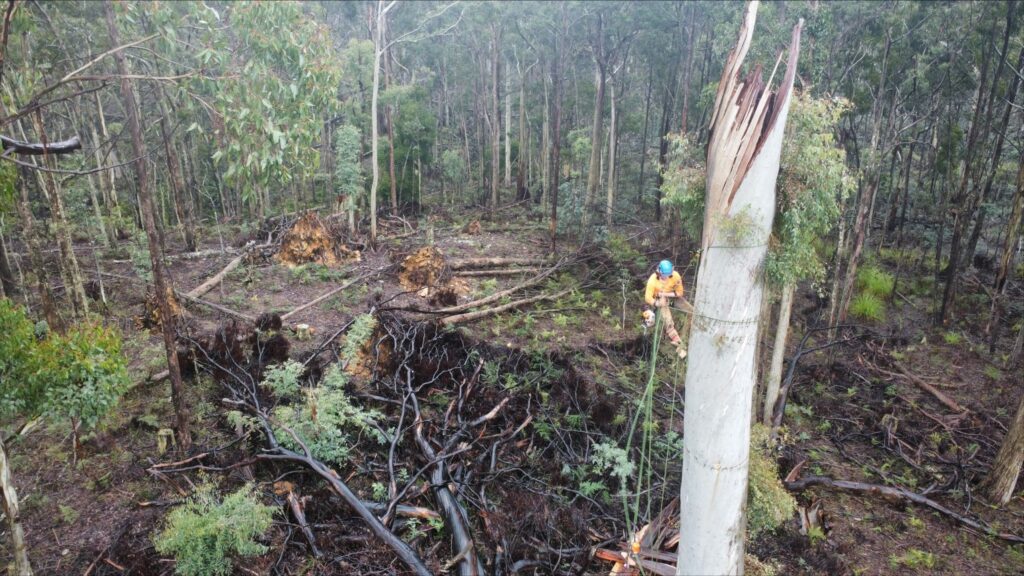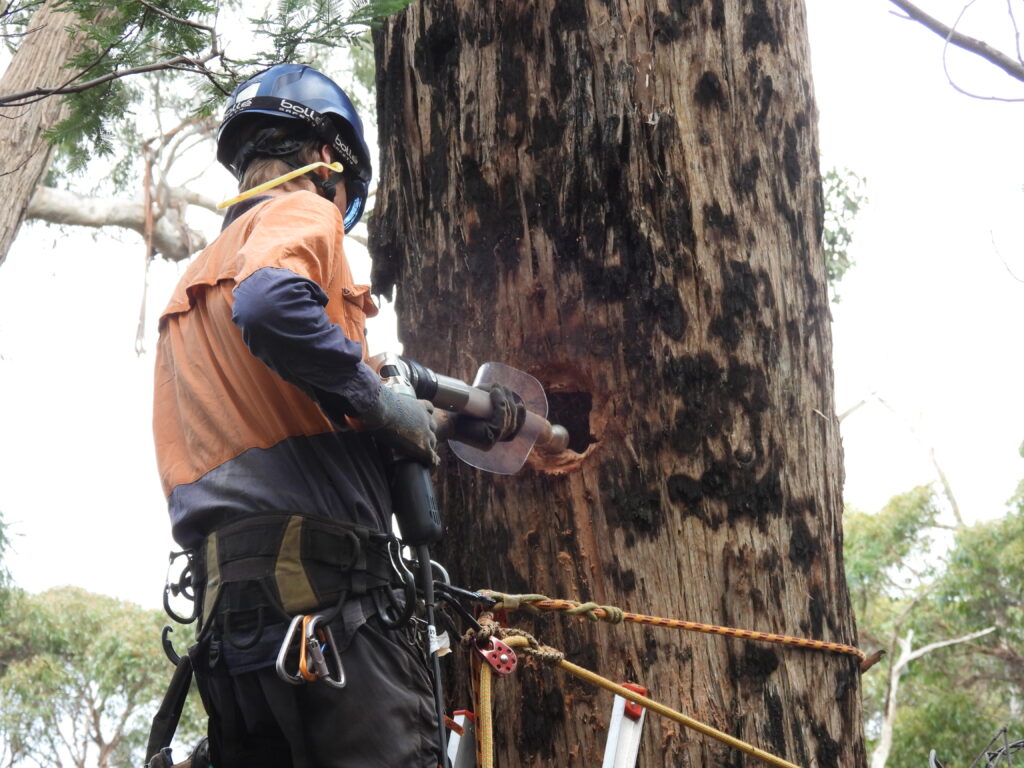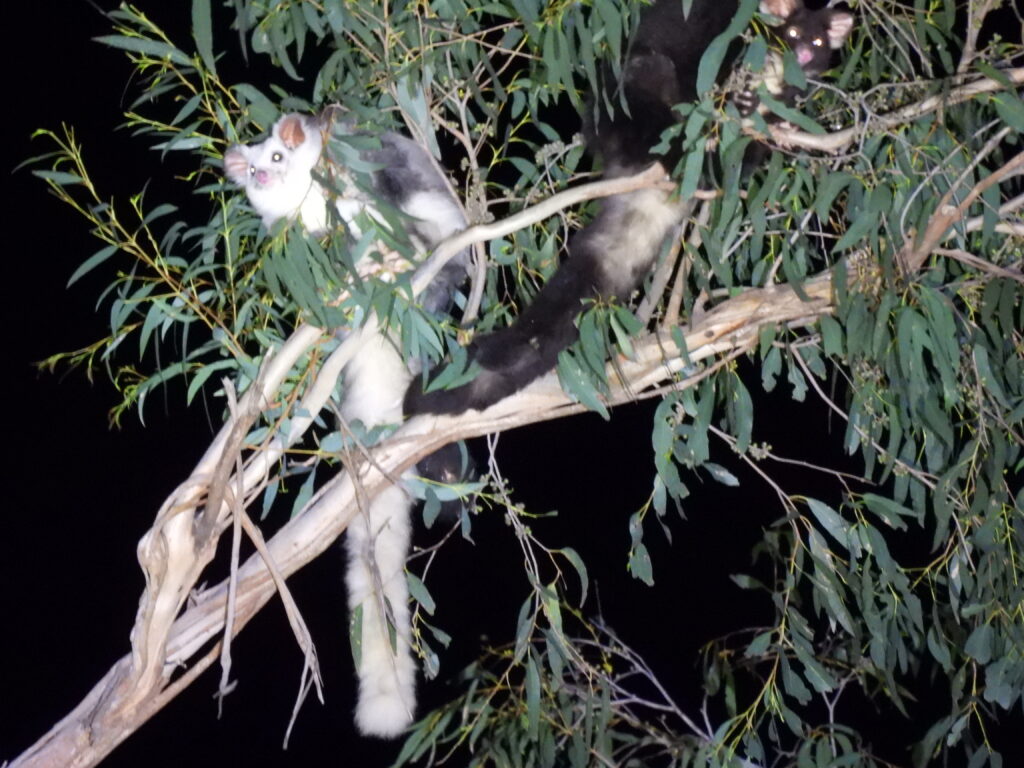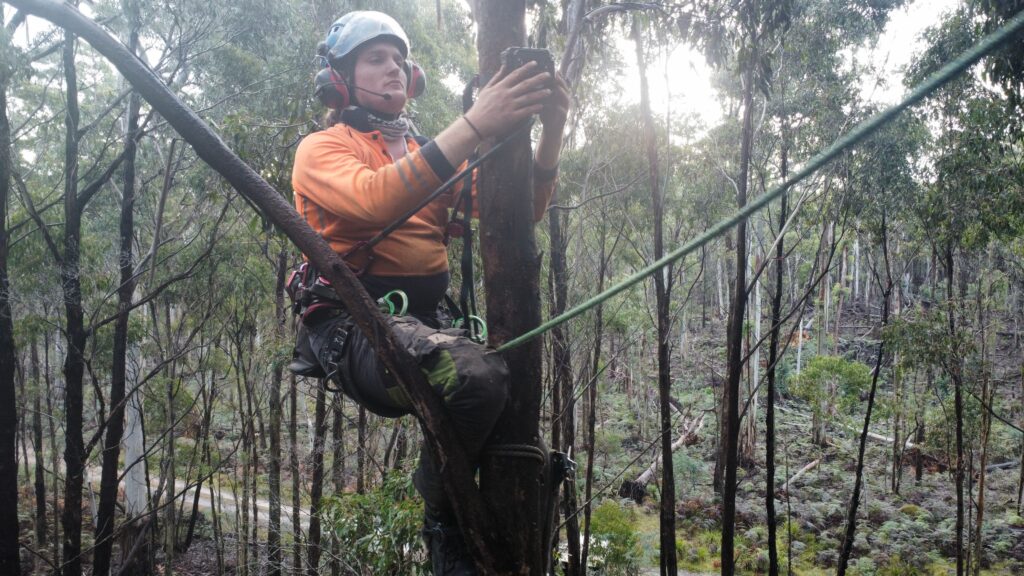
The ERA team recently completed a hollow-creation project in areas of Wombat State Forest which have been impacted by the 2021 storms.
Natural tree hollows can take more than 200 or 300 years to form, and unfortunately the wild storms of 2021 resulted in many precious hollow-bearing trees falling or being damaged.
Hollow creation is a rapidly developing field in conservation and there are now a number of methods used to create hollows in living or dead trees which can immediately be used by hollow-dependant fauna.

In the Wombat State Forest, there are a number of threatened and near threatened native species which rely on tree hollows to breed and survive, including arboreal marsupials and birds.
Our ecology and arboriculture team work very closely together to ensure that hollows are created in the most appropriate habitat, and in the most appropriate way, to suit our target species.
During this project, we created two different sized hollows focussing on a range of threatened or vulnerable hollow-using species that call the Wombat State Forest home.
A smaller, lower hollow, situated in areas with connected mid-story vegetation, was created for small hollow-using species including Eastern Pygmy-Possums (Cercartetus nanus), Brush-Tailed Phascogales (Phascogale tapoatafa) and Red Browed Treecreepers (Climacteris erythrops).
Larger, higher hollows, were created targeting the Southern Greater Glider (Petauroides volans subsp. volans) located in areas with Stringybark and Peppermint Eucalyptus tree species, known to be preferred by this species.

Drawing on the most recent research on artificial hollow creation, our team used a variety of tools to create hollows with internal dimensions and openings that are based on known preferences of our target species.
To create natural looking hollows that will require minimum maintenance, we used a newly developed tool called the Hollowhog, combined with other more general field-tested methods.
Our team is incredibly careful not to install hollows in existing hollow-bearing trees; if we were unable to determine presence of hollows from the ground, we used a drone to investigate!
In all, our team installed more than 100 new hollows, and also set a number of remote cameras to monitor activity around the hollows. We are very excited to return and monitor the hollows and see if we got any target (or otherwise!) animals on camera!
